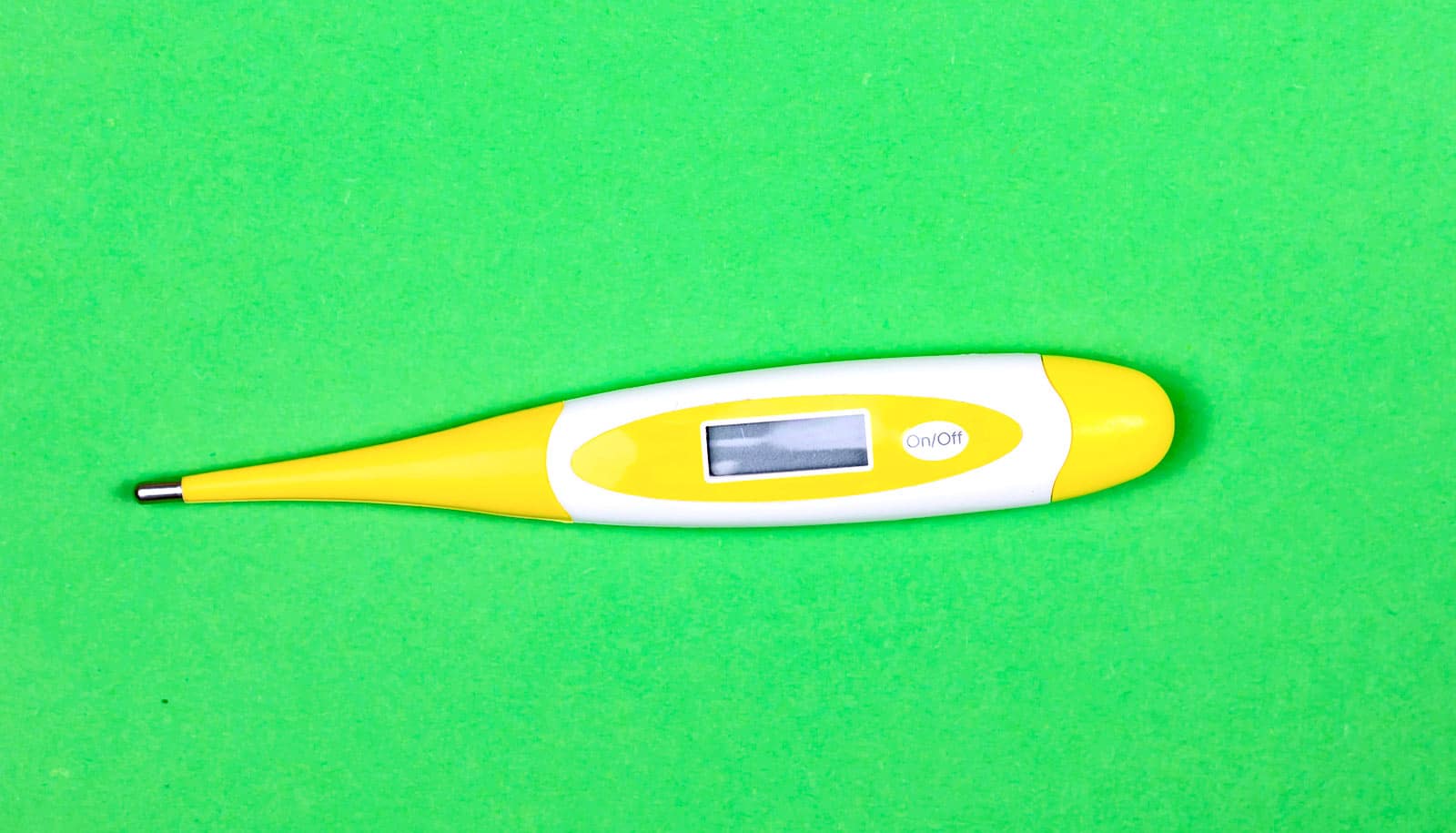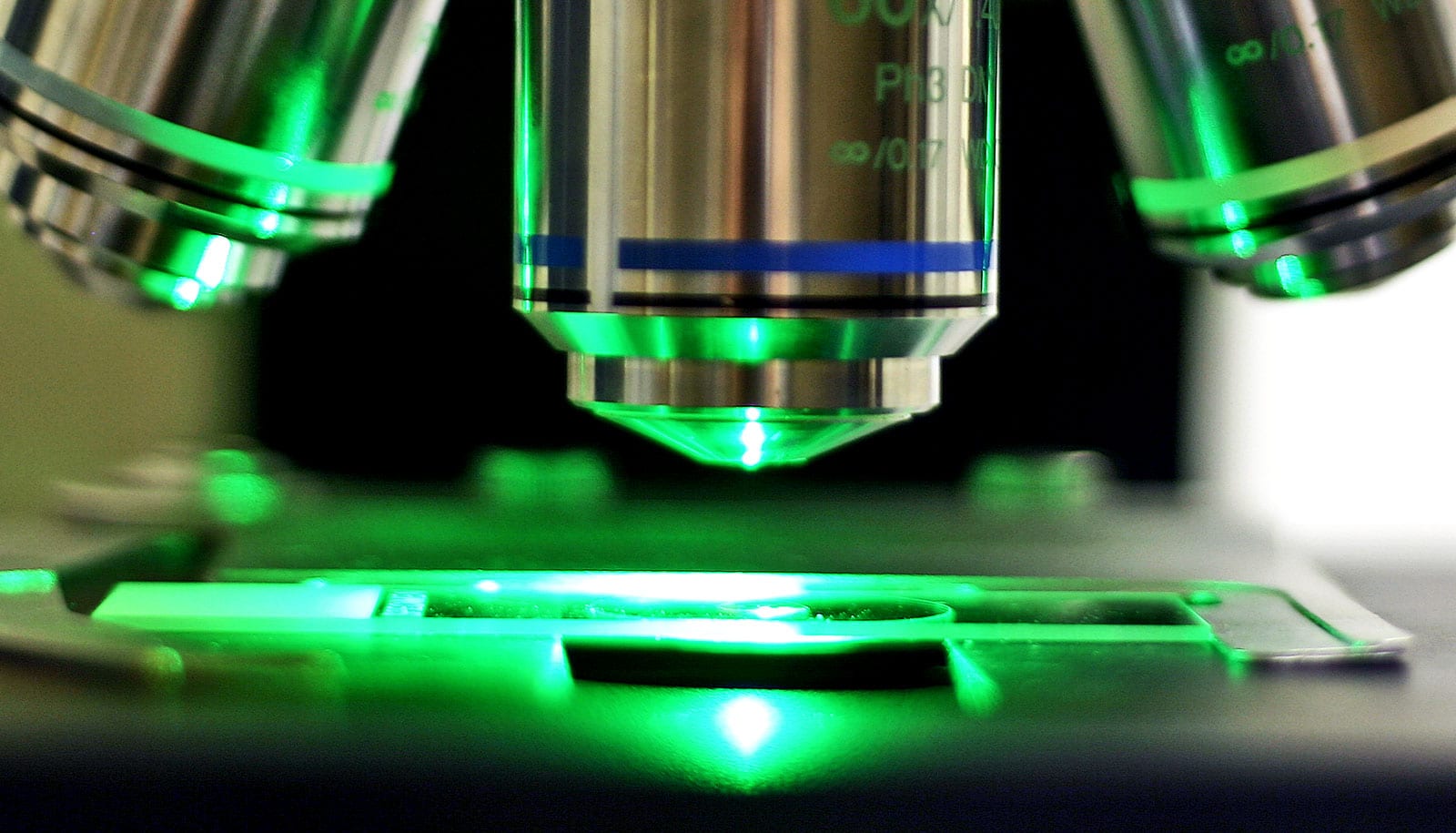It’s now possible to take the temperature inside a cell with a fluorescent nano-thermometer, researchers report.
Researchers used the light-emitting properties of particular molecules to create the nano-thermometer, modifying a biocompatible molecular rotor known as boron dipyrromethene (BODIPY, for short) to reveal temperatures inside single cells.
Light-up molecule
The molecule is ideally suited to the task. Its fluorescence lasts only a little while inside the cell, and the duration depends heavily on changes in both temperature and the viscosity of its environment. But at high viscosity, the environment in typical cells, its fluorescence lifetime depends on temperature alone.
It means that at a specific temperature, the light turns off at a particular rate, and researchers can see that that with a fluorescence-lifetime imaging microscope.
Angel Martí, an associate professor of chemistry and bioengineering at Rice University, says colleagues at Baylor College of Medicine challenged him to develop the technology.
“Everybody knows old thermometers based on the expansion of mercury, and newer ones based on digital technology,” he says. “But using those would be like trying to measure the temperature of a person with a thermometer the size of the Empire State Building.”
Wobbling rotor
The technique depends on the rotor. Martí and lead author Meredith Ogle, a graduate student, constrained the rotor to go back and forth, like the flywheel in a watch, rather than letting it rotate fully.
“It pretty much wobbles,” Martí says.
“What we measure is how long the molecule stays in the excited state, which depends on how fast it wobbles,” he says. “If you increase the temperature, it wobbles faster, and that shortens the time it stays excited.”
The effect, Martí says, is conveniently independent of the concentration of BODIPY molecules in the cell and of photobleaching, the point at which the molecule’s fluorescent capabilities are destroyed.
“If the environment is a bit more viscous, the molecule will rotate slower,” Martí says. “That doesn’t necessarily mean it’s colder or hotter, just that the viscosity of the environment is different.
“We found out that if we constrain the rotation of this motor, then at high viscosities, the internal clock—the lifetime of this molecule—becomes completely independent of viscosity,” he says. “This is not particularly common for these kind of probes.”
Can the nano-thermometer spot cancer cells?
Martí says the technique might be useful for quantifying the effects of tumor ablation therapy, where heat is used to destroy cancer cells, or in simply measuring for the presence of cancers.
“They have a higher metabolism than other cells, which means they’re likely to generate more heat,” he says. “We’d like to know if we can identify cancer cells by the heat they produce and differentiate them from normal cells.”
The research appears in the Journal of Physical Chemistry B. Additional coauthors are from Rice, Celgene Co., Christus Mother Frances Hospital, and Baylor College of Medicine. The Dunn Collaborative Research Grant Program and the Optical Imaging and Vital Microscopy Core at Baylor College of Medicine, which the National Institutes of Health funds, supported the research.
Source: Rice University



